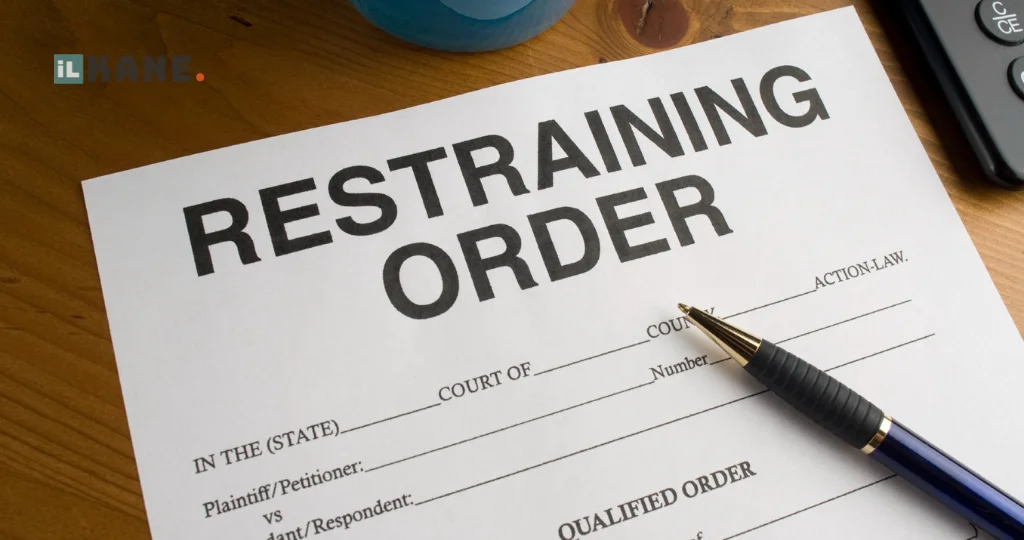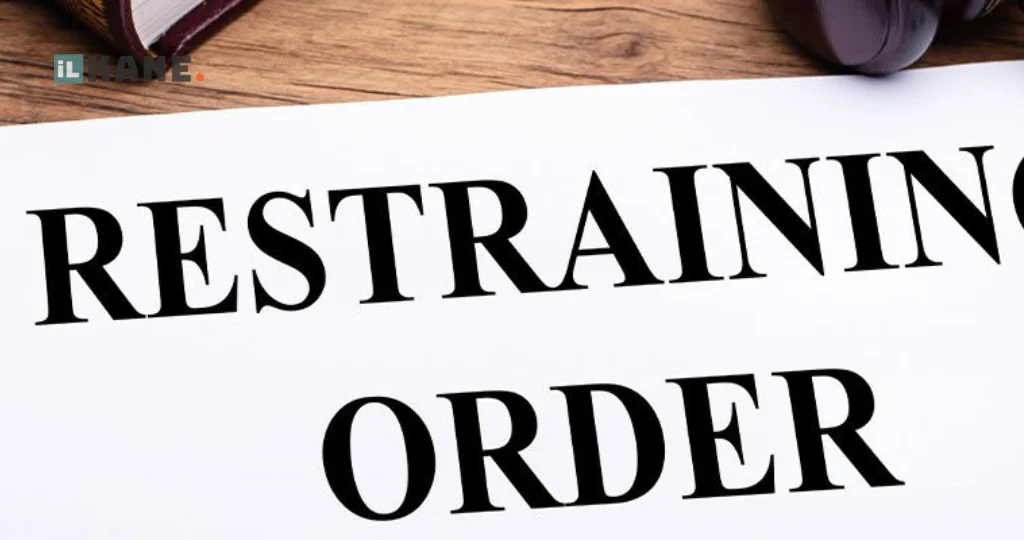Navigating the Legalities: How a Restraining Order Impacts Your Record Introduction: Welcome to our blog! Today, we’ll be discussing a topic that many people may find themselves wondering about: restraining orders and their impact on your record. If you’ve ever pondered, “Does a restraining order appear on your record?” or if you’re acquainted with someone who has, you’re in the correct location. In this article, we’ll explore the legalities surrounding restraining orders and shed some light on what it means for your record. So, let’s dive in!
Understanding Restraining Orders:
First and foremost, let’s clarify what a restraining order is. A restraining order, also known as a protection order, is a legal document issued by a court that aims to protect someone from another person’s unwanted behavior or contact. It establishes a set of guidelines and limits the contact between the two parties involved.
The Impact on Your Record:
Does a restraining order go on your record?
The response is not as simple as one might assume. While a restraining order itself is not a criminal offense, it does become a part of your legal record. However, it’s important to note that having a restraining order on your record doesn’t automatically indicate guilt or imply any criminal activity.
Civil vs. Criminal Records:
To better understand the impact of a restraining order on your record, it’s crucial to differentiate between civil and criminal records. A restraining order falls under civil law, which deals with disputes between individuals rather than criminal offenses. Civil records, including restraining orders, are typically not accessible to the general public.
Employment and Background Checks:
When it comes to employment, many individuals worry about how a restraining order might affect their chances of getting hired. While employers do have the right to conduct background checks, the presence of a restraining order on your record is unlikely to be a determining factor in most cases. Employers primarily focus on criminal convictions, not civil matters.
Exceptions to Consider:
Although restraining orders generally do not appear on standard background checks, there are some situations where they may be disclosed. For example, if you’re applying for a job that requires a high level of security clearance or involves working with vulnerable populations, such as children or the elderly, it’s possible that a thorough background check may reveal the existence of a restraining order.
Removing or Expunging a Restraining Order:
If you’re concerned about the presence of a restraining order on your record, it’s important to consult with a qualified attorney to explore your options. In some cases, it may be possible to have a restraining order removed or expunged from your record, especially if there are no violations or further incidents involved.

While a restraining order does become a part of your legal record, it typically does not have a significant impact on your day-to-day life or future employment prospects. The presence of a restraining order is generally not accessible to the public, and it is unlikely to affect most employment opportunities. However, it’s important to consider any exceptions that may apply, especially in sensitive fields. If you have concerns about a restraining order on your record, always seek professional legal advice to understand your options fully. Remember, your record doesn’t define you, and with the right guidance, you can navigate the legalities and move forward with confidence.
Disclaimer: This blog post is meant solely for providing information and should not be interpreted as legal advice.. Please consult a qualified attorney for personalized guidance on your specific situation.
The Vitality of Obtaining a Restraining Order Introduction:
We prioritize your safety and well-being above all else. In this article, we will discuss the significance of obtaining a restraining order and how it can help protect you from potential harm. Whether you are currently facing a threatening situation or seeking preventive measures, understanding the importance of a restraining order is crucial. Read on to learn more about how this legal tool can provide you with the peace of mind and security you deserve.
What is a Restraining Order?
A restraining order, also known as a protective order or an order of protection, is a legal document that aims to safeguard an individual from harassment, abuse, or threats. It is a court order that prohibits an individual, often referred to as the “respondent,” from contacting, approaching, or engaging with the person seeking protection, known as the “petitioner.” A restraining order ensures that you can continue with your daily life without fear or worry.
The Importance of Obtaining a Restraining Order:
Ensuring Personal Safety:
Obtaining a restraining order is crucial for your personal safety. It serves as a legally enforceable barrier between you and the person causing harm or distress. By obtaining this order, you can create a physical and emotional distance, reducing the risk of potential physical violence or emotional trauma.
Preventing Contact and Harassment:
A restraining order prohibits the respondent from contacting or approaching you in any way, be it in person, via phone calls, emails, or social media. This legal protection helps prevent unwanted interactions, harassment, or stalking, providing you with a sense of security and control over your life.
Protecting Family and Loved Ones:
If you have children or other family members who may be at risk, a restraining order can extend its protection to them as well. By obtaining this legal document, you can ensure the safety of yourself and your loved ones, creating a safe environment for everyone involved.
Establishing a Paper Trail:
Having a restraining order on record can be beneficial for various reasons. It creates a paper trail that documents incidents of harassment or threats, which can be crucial evidence in future legal proceedings. This documentation can help strengthen your case and support any additional legal actions you may need to take.
Peace of Mind and Emotional Well-being:
By obtaining a restraining order, you are taking an active step towards reclaiming your peace of mind and emotional well-being. Knowing that legal measures are in place to protect you can bring a sense of relief and allow you to focus on healing and moving forward with your life.
When it comes to your safety, there is no room for compromise. Obtaining a restraining order is a proactive step towards protecting yourself and your loved ones from potential harm. It provides a legal framework that ensures your personal safety, prevents contact and harassment, and establishes a paper trail for future actions if necessary. Remember, you deserve to feel safe and secure, and a restraining order can help you achieve just that.

If you are facing a threatening situation or feel the need for preventive measures, we urge you to consult with a legal professional who can guide you through the process of obtaining a restraining order. Your safety is paramount, and taking action today can make all the difference tomorrow. Stay safe, stay protected!
Legal Insights:
Exploring the Process of Obtaining a Restraining OrderAre you concerned about your safety? Do you feel threatened or harassed by someone? If so, obtaining a restraining order may be a crucial step to protect yourself and regain peace of mind. In this blog post, we will provide you with valuable legal insights into the process of obtaining a restraining order, ensuring you have all the information you need to make the right decision.
What is a Restraining Order?
A restraining order, also known as a protective order or an order of protection, is a legal document issued by a court that prohibits an individual from contacting or approaching another person. It is designed to prevent further harm or harassment and maintain a safe distance between the parties involved.
Why Obtain a Restraining Order?
There are various reasons why someone might seek a restraining order. If you fear for your safety, have experienced domestic violence, stalking, harassment, or any form of abuse, obtaining a restraining order can provide you with legal protection. It can help ensure that the person causing you harm stays away from you, your home, your workplace, and other places you frequent.
The Process of Obtaining a Restraining Order:
Seek Legal Advice:
The first step in obtaining a restraining order is to consult with an experienced attorney or legal professional. They can guide you through the process, explain your rights, and help you understand the legal implications involved.
Document Incidents:
To strengthen your case, it is essential to document any incidents of harassment, threats, or violence. Keep a record of dates, times, locations, and any evidence such as text messages, emails, or photographs that support your claims.
File the Petition:
Your attorney will assist you in preparing the necessary paperwork, including a petition for a restraining order. This document outlines the reasons why you are seeking protection and provides details about the alleged abuser.
Submit the Petition to Court:
Once the petition is completed, it must be filed with the appropriate court. This is typically achievable either in a face-to-face setting or through an online platform. The court will review your petition and determine whether to grant a temporary restraining order.
Temporary Restraining Order:
If the court finds sufficient evidence to support your request, they may issue a temporary restraining order. This order will provide immediate protection until a full hearing can be scheduled.
Serve the Order:
The temporary restraining order must be served to the person you are seeking protection from. This is typically done by law enforcement or a professional process server.
Full Hearing:
A full hearing will be scheduled where both parties can present their case. It is crucial to have legal representation during this hearing to ensure your rights are protected and that all relevant evidence is presented.
Final Restraining Order:
If the court finds that a restraining order is necessary, they will issue a final restraining order. This order can specify the duration and terms of the protection, which may include staying away from you, your home, or any other designated locations.
Is a Restraining Order on Your Record?
One common concern many people have is whether a restraining order will appear on their record. It is important to note that restraining orders themselves are not criminal charges, and they do not result in a criminal record. However, they may show up on background checks, particularly those conducted for certain employment positions or professional licenses. It is best to consult with your attorney about how a restraining order may impact your specific situation.
Take Action to Protect Yourself:
If you find yourself in a situation where your safety is at risk, don’t hesitate to take action. Obtaining a restraining order can provide the legal protection you need to ensure your well-being. Remember to consult with a knowledgeable attorney who can guide you through the process and advocate for your rights.
Conclusion
In conclusion, a restraining order is a valuable legal tool that can help protect individuals from harassment, abuse, and threats. By understanding the process of obtaining a restraining order, you can take the necessary steps to ensure your safety and regain control of your life. Remember, you are not alone – seek legal guidance and support to navigate this challenging situation.
